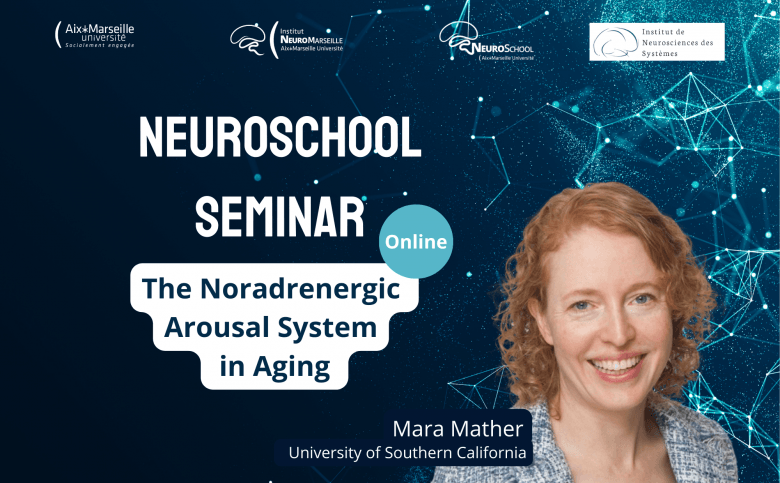Description de la soumission d'un avis

NeuroSchool seminar: Mara Mather
The Noradrenergic Arousal System in Aging
The Noradrenergic Arousal System in Aging
Seminar by Mara MATHER
Department of Gerontology, Psychology and Biomedical Engineering, University of Southern California
On Tuesday, 21 March, 2024, the NeuroSchool PhD Program is inviting Mara Mather online to give a seminar on the Noradrenergic Arousal System in Aging.
Mara Mather has conducted innovative work on the critical role of the noradrenergic system in cognition and aging, how emotion and emotional arousal affect cognition, and how inducing heart rate oscillatory activity benefits emotional brain networks and the aging brain. Based on her highly cited work, she was identified as one of the top 1% of scientists worldwide (Baas, Boyack, Ioannidis, 2021).
The locus coeruleus (LC) is a small brainstem nucleus that provides most of the brain’s noradrenaline. As the brain’s hub region for arousal, it integrates signals about wakeful, autonomic, and emotional arousal and coordinates brain activity to support the current arousal state. Our GANE model posits that, due to its interactions with local cortical excitatory activity, noradrenaline released under arousal can flexibly enhance processing of representations that currently have high priority. The LC’s role in aging is of particular interest because, before any other Alzheimer’s-related pathology can be detected in the cortex, initial indications of tau pathology appear in the locus coeruleus and slowly spread along its axons. Tau tangles appear in the initial cortical targets of the LC (medial temporal cortex and hippocampus) before other regions. More generally throughout the brain, release of noradrenaline can either promote or suppress the production and accumulation of amyloid-β and tau. Thus, LC function is likely to influence the rate of Alzheimer’s disease progression. Evidence suggests that stress-induced high tonic levels of LC activity accelerate Alzheimer’s disease while the phasic burst pattern of LC activity seen under conditions of novelty is protective. In a recent clinical trial, we used 5 weeks of daily slow paced breathing during heart rate variability biofeedback to reduce noradrenergic activity and increase parasympathetic activity, compared to an active comparison condition. Differential changes across the two conditions in LC structure and the volume of hippocampal subregions targeted by the LC suggest that this intervention affects the LC in ways that promote healthy brain aging.
The schedule is as follows:
- 3:30 PM : Discussion among students to discuss the papers – For PhD students only – online
- 4:30 PM : Seminar – Open to all – online
- 5: 30 PM : Special discussion time with the speaker – For PhD students only – online
📢 PhD students: register on AMETICE. Remember to sign the online presence sheet in order for your hours to be counted. Attendants get 3 hours, chairpersons 4 hours.

